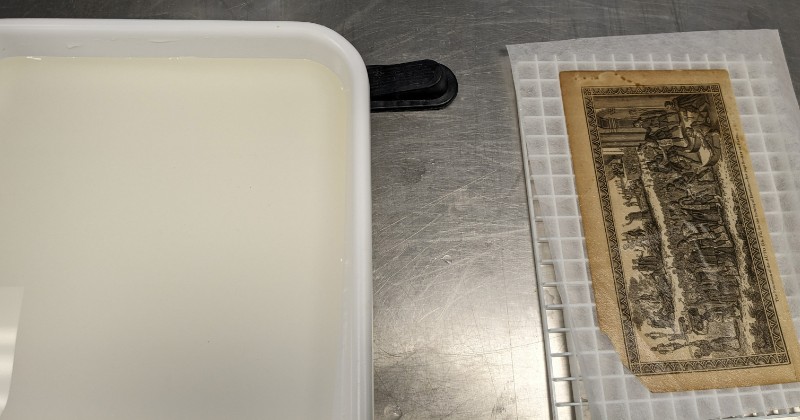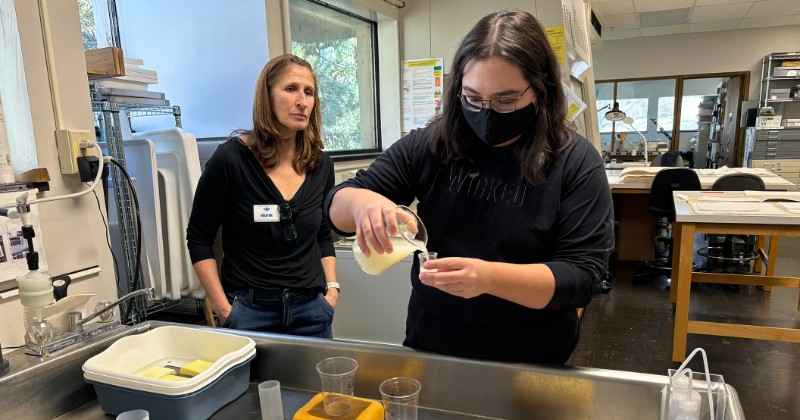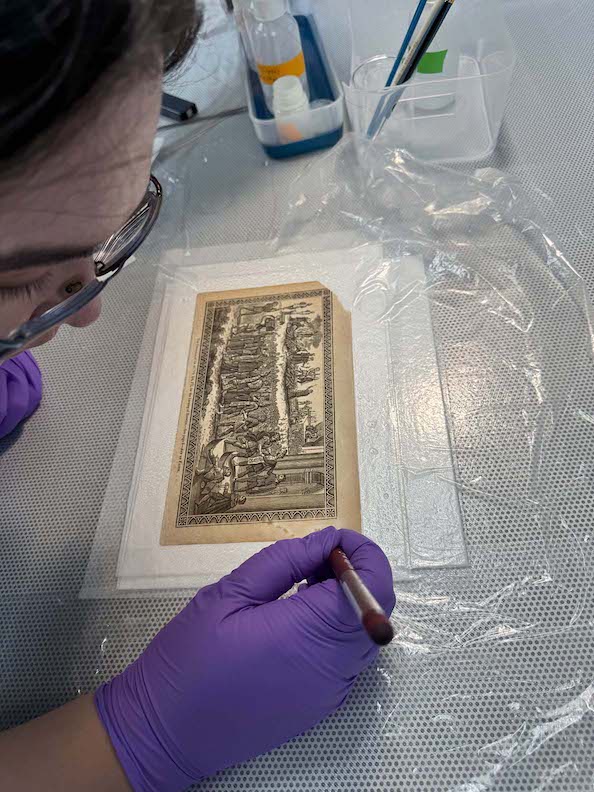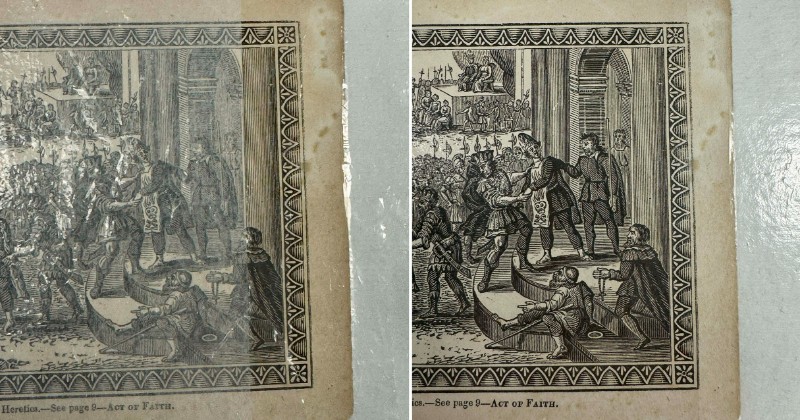
Category: Art Conservation

Student Blog: Art Conservation and Second Acts
May 08, 2025 Written by Lisa Chambers
Before arriving at WUDPAC to learn paper conservation, Sam Callanta constructed and painted sets as a scenic artist in the theater world. The work made her curious: “Why was I using latex versus casein paint,” she wondered. “Why don’t we use oil paint in theater?” The answer, she says, is simple: Oil takes too long to dry. “Working in a materials-heavy workshop gave me an appreciation for understanding how those materials work and how they interact with each other.”
It turns out her background as a theater major—and her second major in East Asian Studies—provided a good foundation for conservation when she decided to switch careers. Now a second-year Fellow, Sam is a paper major with a textile minor to prepare for further training conserving East Asian paintings. She is working on a study collection object, a book illustration of a scene from the Spanish or Portuguese Inquisition, to hone her understanding of paper and water. The page had “highly localized staining, possibly caused by oxidation,” she says. To remove or at least improve the sheet’s discoloration would require “complex aqueous treatment.”


The illustration was undated, and “it was difficult, even under magnification and transmitted light, to tell if the paper was machine made or handmade,” she says. To treat the staining, she began by immersing the entire piece in an aqueous bath solution—in which ionic compounds in the paper causing the stains could exchange with the ions in the solution. The water turned slightly yellow—a sign that degradation products had moved out of the paper.
The treatment reduced the overall discoloration, but there were still a few dark, localized stains. Sam applied other reducing agents with a spray bottle and by hand with a brush. Like painting with chemicals, she explains, “you’re creating a soft feather effect to control the amount of discoloration reduction that’s happening.” She also repaired the missing top left corner using a pulp fill she learned how to make during a workshop with paper conservator Renate Mesmer. Pulp paper fills create a weak paper that works well for conservation purposes, she notes: “You can tailor it to be a good match for the structure of historical paper, whether it looks felted or woven.” Wheat starch paste secured the new corner in place.
Sam is excited to continue applying the skills she’s learning in her new career. “In theater we make art, but the art of it lies in its ephemerality,” she says. “Conservation is the opposite because we’re trying to stabilize artworks and keep them for posterity.”

